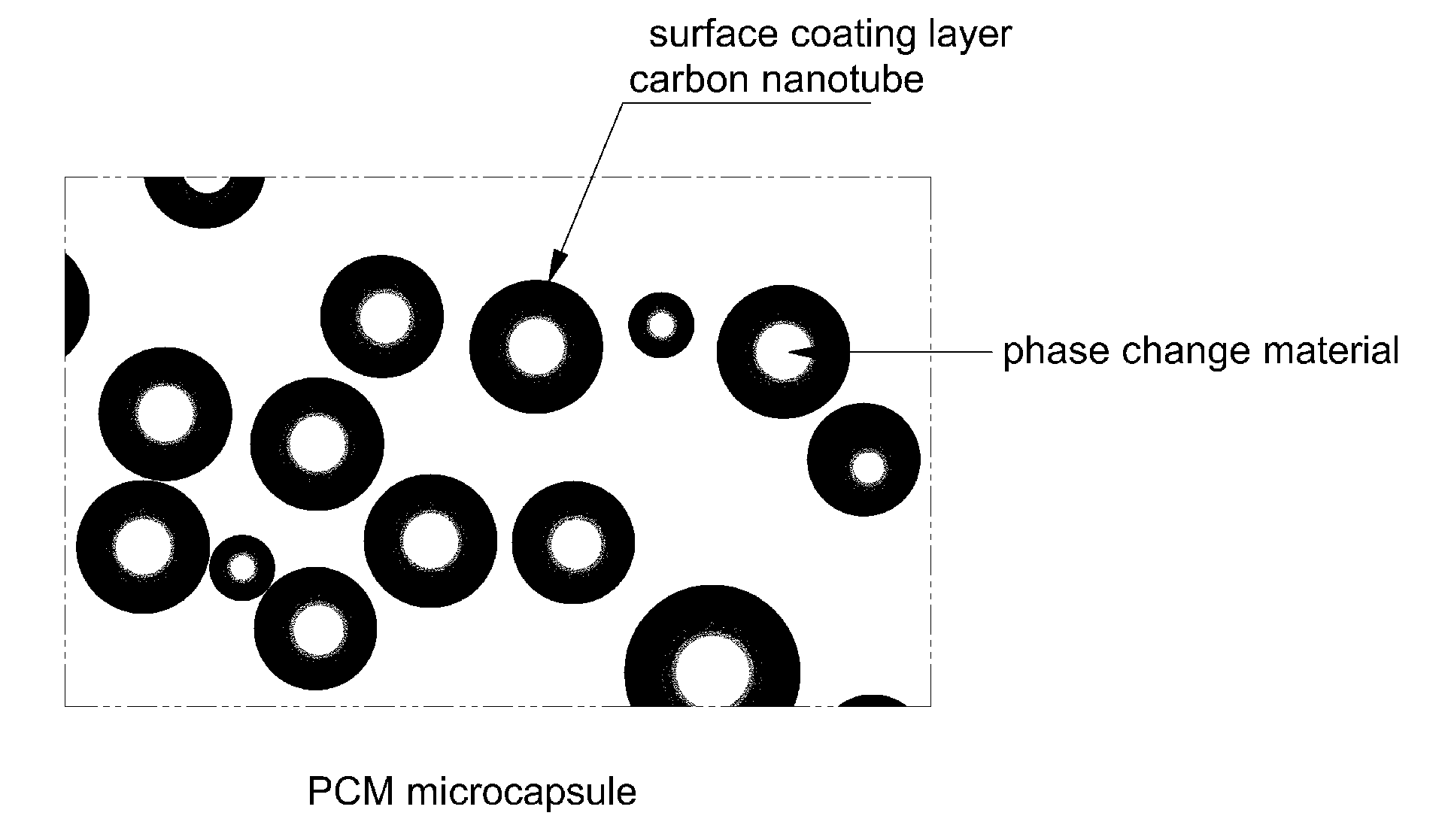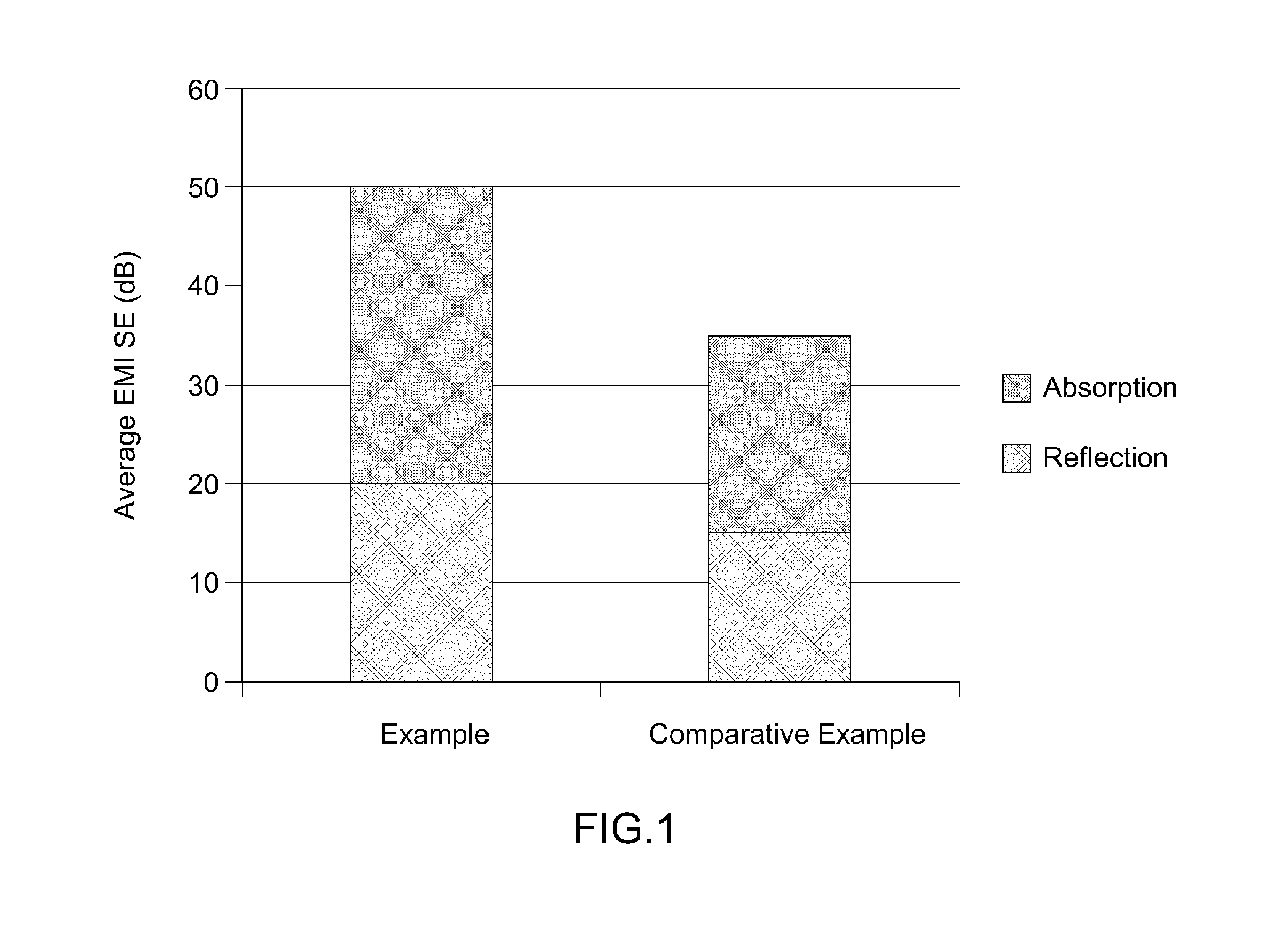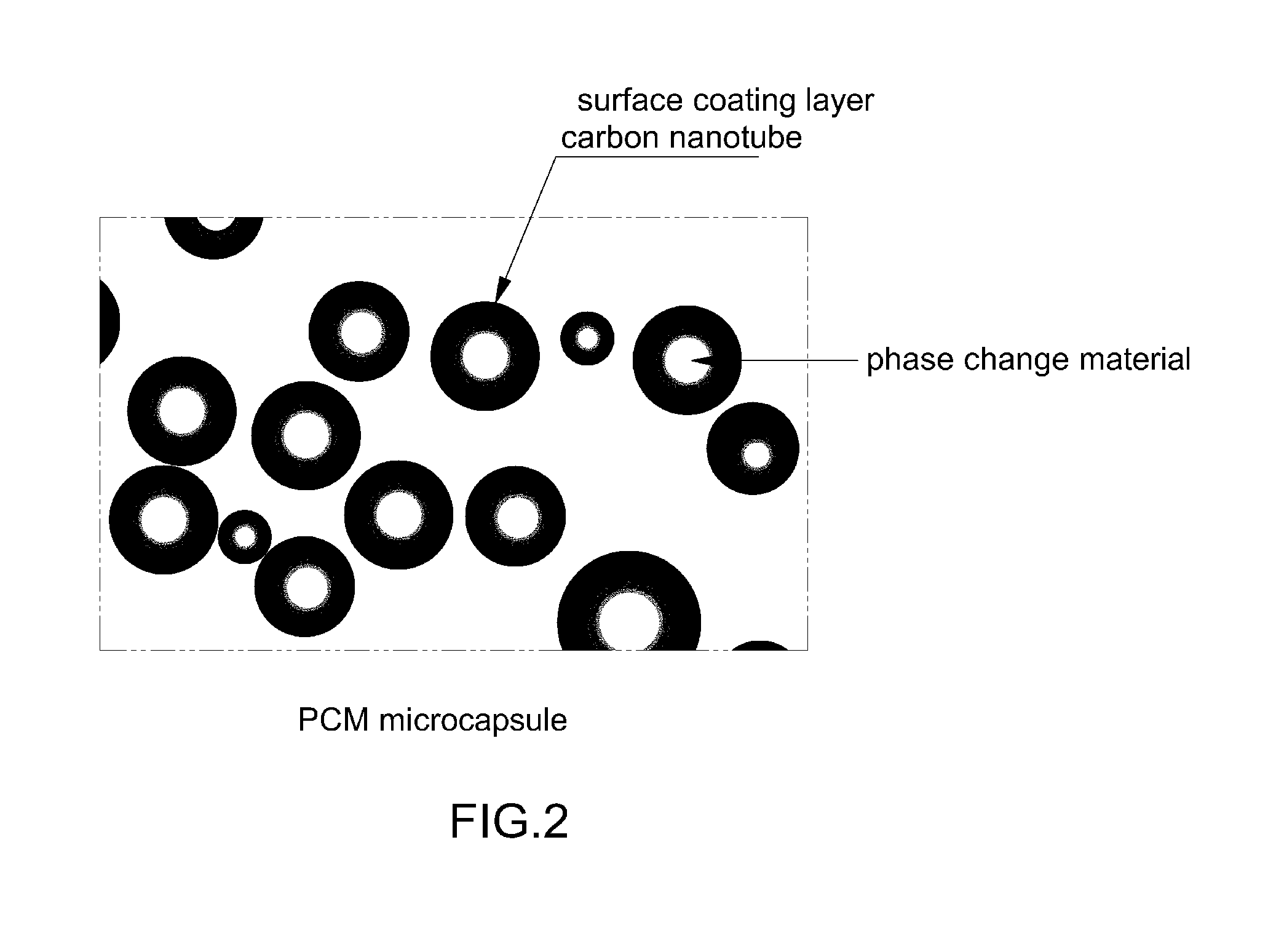Hybrid polymer composites for electromagnetic wave shielding, and a method for fabricating the same
a technology of hybrid polymer composites and electromagnetic waves, which is applied in the direction of non-metal conductors, conductors, synthetic resin layered products, etc., can solve the problems of electromagnetic waves becoming an increasing problem, serious threat to the safety of electronic equipment itself, and serious danger to the safety of peopl
- Summary
- Abstract
- Description
- Claims
- Application Information
AI Technical Summary
Problems solved by technology
Method used
Image
Examples
example
Fabrication of a Hybrid Polymer Composite Comprising Microcapsule Containing Carbon Nanotube-Coated Phase Change Material, and Carbon
[0039]2 g of octadecane kept at 50° C. was slowly added and dispersed to a 5% aqueous solution of anhydrous styrene-maleic acid copolymer as a surfactant in a 500 mL three neck flask equipped with a condenser and a stirrer, and the resulting solution was forcibly emulsified using a homogenizer (IKA T-50 basic) at 5,000 rpm for 10 min. Then, a coating solution to form a surface layer on a capsule was prepared. First, melamine (0.05 mole) and formaldehyde (0.25 mole, 37% solution) were mixed and reacted at 60° C. for 20-25 min to obtain a semitransparent polymer precursor. A multi-walled carbon nanotube 0.5 wt % was added to the polymer precursor and mixed with stirring at 500 rpm. The resulting mixture was added to the emulsion prepared above and stirred at reaction temperature of 80 85° C. for 2 hours to form a coating layer. After forming microcapsule...
PUM
| Property | Measurement | Unit |
|---|---|---|
| thickness | aaaaa | aaaaa |
| diameter | aaaaa | aaaaa |
| melt compounding temperature | aaaaa | aaaaa |
Abstract
Description
Claims
Application Information
 Login to View More
Login to View More - R&D
- Intellectual Property
- Life Sciences
- Materials
- Tech Scout
- Unparalleled Data Quality
- Higher Quality Content
- 60% Fewer Hallucinations
Browse by: Latest US Patents, China's latest patents, Technical Efficacy Thesaurus, Application Domain, Technology Topic, Popular Technical Reports.
© 2025 PatSnap. All rights reserved.Legal|Privacy policy|Modern Slavery Act Transparency Statement|Sitemap|About US| Contact US: help@patsnap.com



